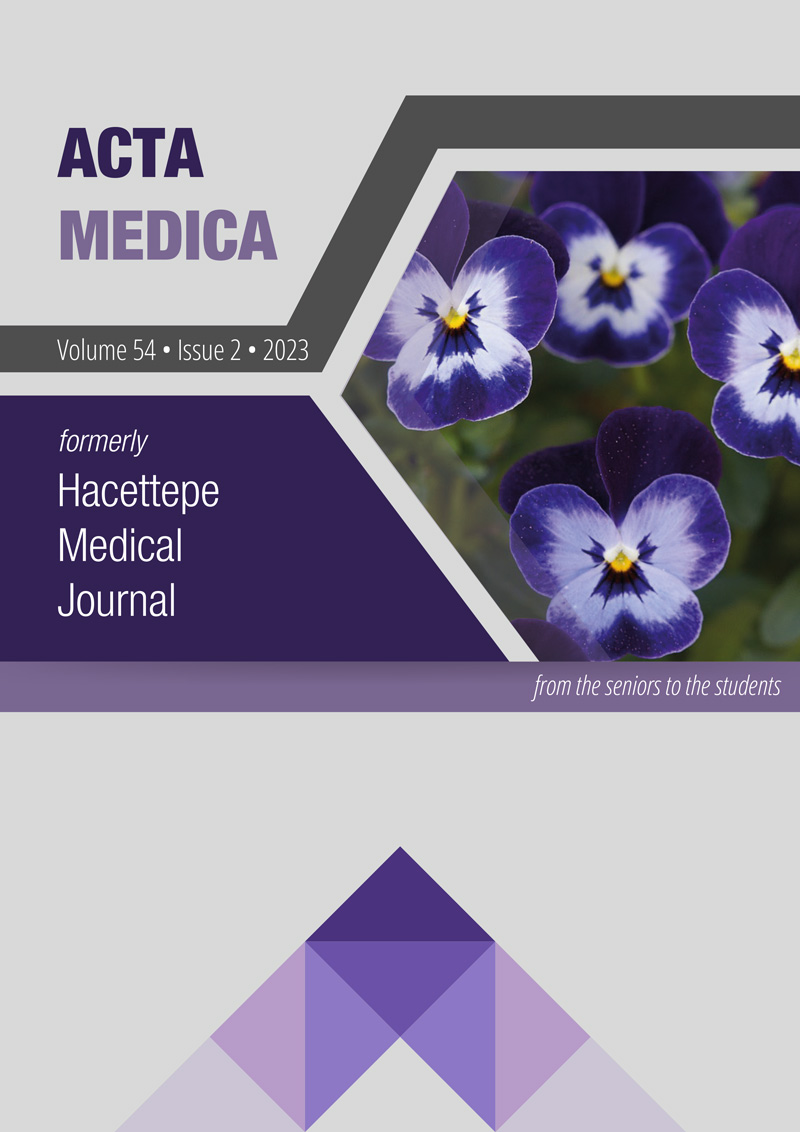Low-grade glial tumors: The experience of an oncology hospital in Türkiye
DOI:
https://doi.org/10.32552/2023.ActaMedica.899Keywords:
astrocytoma, glioma, mortality, survivalAbstract
Objective: Several factors are important in the prognosis of low grade gliomas, besides genetic changes. The present study aims to examine the effect of other factors on prognosis except for genetic changes in low grade gliomas (LGGs).
Materials and Methods: Patients diagnosed with “brain malignant neoplasm” who were referred to Hacettepe University Oncology Hospital were screened. Among these patients, 148 patients with a supratentorial low grade gliomas whose data are completely available were included. Patients were followed for at least five years after diagnosis or death within this period.
Results: Mean age of diagnosis was 36.2±10.7 years, and 52.7% of patients (n=78) were females, Most common subtype was oligodendroglioma (n=86, 58.1%). Sixty-two of patients relapsed (41.9%). The 5-year mortality rate was 35.1% (n=52). Kaplan-Meier analysis of the variables, the only difference was between histopathological subtypes (p=0.03). Astrocytoma histology was related to wporse prognosis. Cox regression analysis of factors affecting 5-year mortality, advancing age (HR: 1.03, 95% CI: 1.00-1.06, p=0.03), astrocytoma (HR: 2.59, 95% CI: 1.35-4.98, p=0.004) and oligoastrocytoma (HR: 2.13, 95% CI: 1.02-4.43, p=0.04) were identified to increase the mortality risk.
Conclusion: The age of the patients and the histopathologic subtype of the tumor must be taken into consideration during the follow-up and treatment of low grade gliomas.
Downloads
Downloads
Published
How to Cite
Issue
Section
License
Copyright (c) 2023 Acta Medica

This work is licensed under a Creative Commons Attribution-NonCommercial-NoDerivatives 4.0 International License.


